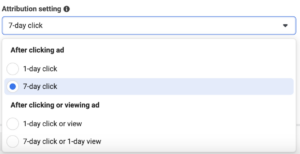How to Approach Marketing Attribution in 2023
Published on April 3, 2023
Written by Eric Farmer
Marketing attribution has become such a buzzword in our industry over the last 10 years. And I understand the desire to know where customers are coming from. Data is everything to marketers and solving for attribution is like summiting Mt. Everest! The reality, though, is that it is deeply flawed. While I think there is some value for tracking clicks and conversions back to their source, it also causes unnecessary distraction. If we get too caught up in attribution, we can completely overlook other benefits of our marketing efforts, such as brand awareness, incremental revenue, and customer lifetime value (LTV).
In fact, the obsession with attribution (especially in paid media) has led to a myopic focus on short-term ROI at the expense of long-term growth and sustainability. By attributing all credit for a conversion to the last marketing touchpoint, brands are missing out on the bigger picture of how their brand is perceived and valued by customers, what the customer journey looks like for their customers, and how to provide the best possible product and service.
Also, the reliance on data and metrics has led to a dehumanization of the marketing process, reducing customers to mere data points and erasing the emotional and psychological factors that influence purchasing decisions. This approach may generate short-term gains, but it will ultimately lead to a disconnect between businesses and their customers.
Instead of relying solely on paid media attribution, businesses should adopt a more holistic and customer-centric approach to marketing. This means focusing on building long-term relationships with customers, fostering brand loyalty, and delivering value beyond the initial purchase. By doing so, businesses can create a sustainable and profitable marketing strategy that benefits both the company and its customers.
So what can you do today to at least help your attribution?
First, you need to set realistic expectations. There are hundreds of tools claiming they can solve your attribution problem. If a tool claims 100% accuracy with attribution that’s a huge ????so run far away. Nothing has 100% accuracy when it comes to attribution.
Second, make sure you’re using the right in-platform attribution setting. And for the love of all that is holy stop attributing view-through conversions. In Meta, use 7-day or 1-day click only.

Unfortunately, Google makes you use at least a 1-day view-through conversion window, so just make sure it’s set to 1 day.

After doing this you might notice a slight dip in conversions, but that’s okay. Not only will the ad platform’s attribution be more accurate, but the algorithm will start optimizing for click-through conversions, which is what you want.
Third, audit all your third-party tools to make sure they’re actually helping you make better decisions. This includes Google Analytics and attribution platforms like Triple Whale or Northbeam.
We have found Triple Whale to be very insightful when it comes to certain metrics we cannot easily pull from Shopify or the ad platform, like customer LTV, cohort analyses, sales cycles, and even customer journeys. But, keep in mind, what Tripe Whale reports is not what the algorithm is learning from and optimizing for. That is strictly based on in-platform data (BTW, If you’re interested in testing Triple Whale we can offer you a 15% discount with code WALLAROO15).
In summary, attribution is messy. It’s better to focus your energy on selling the best product possible and having excellent customer service. But, do everything within your control to report accurate data, so you can make the best decisions to move your eCom business forward. Good luck out there!




